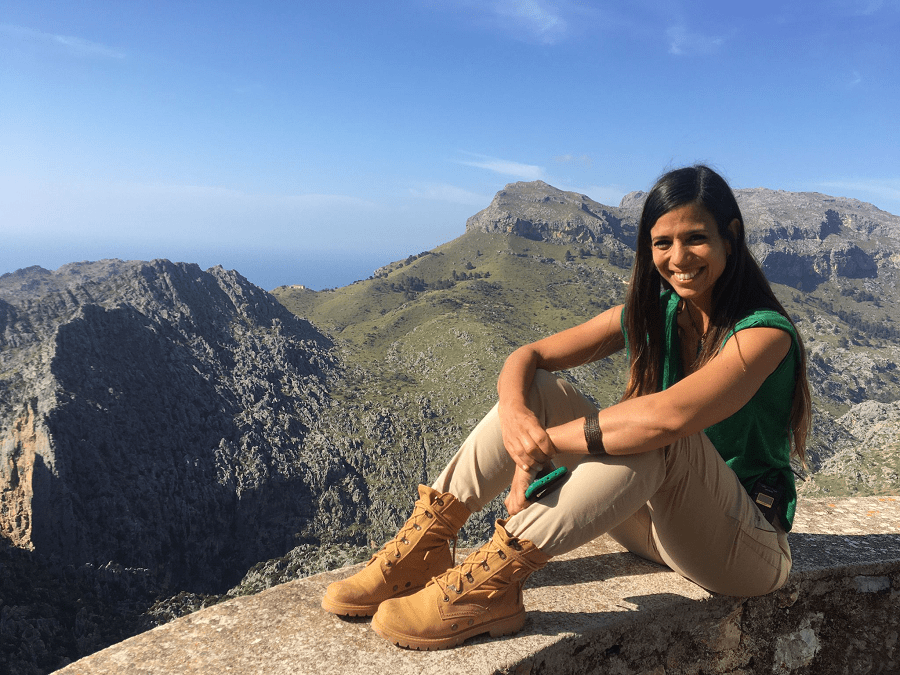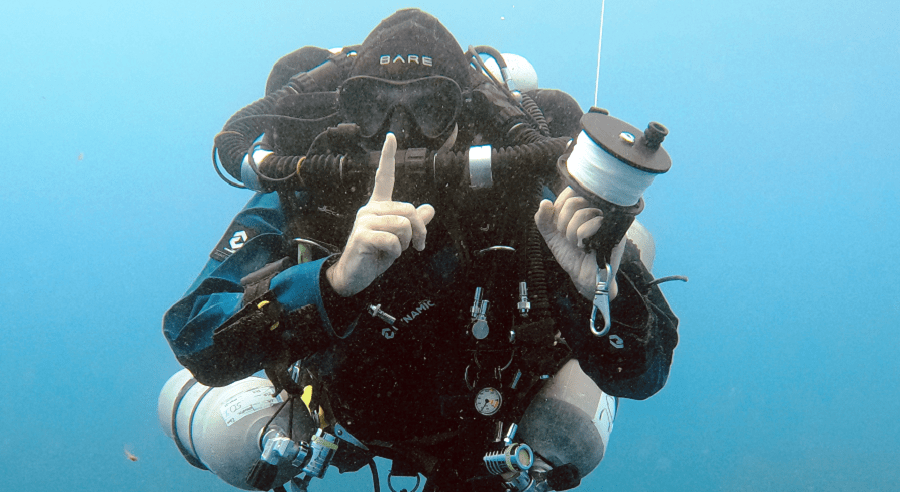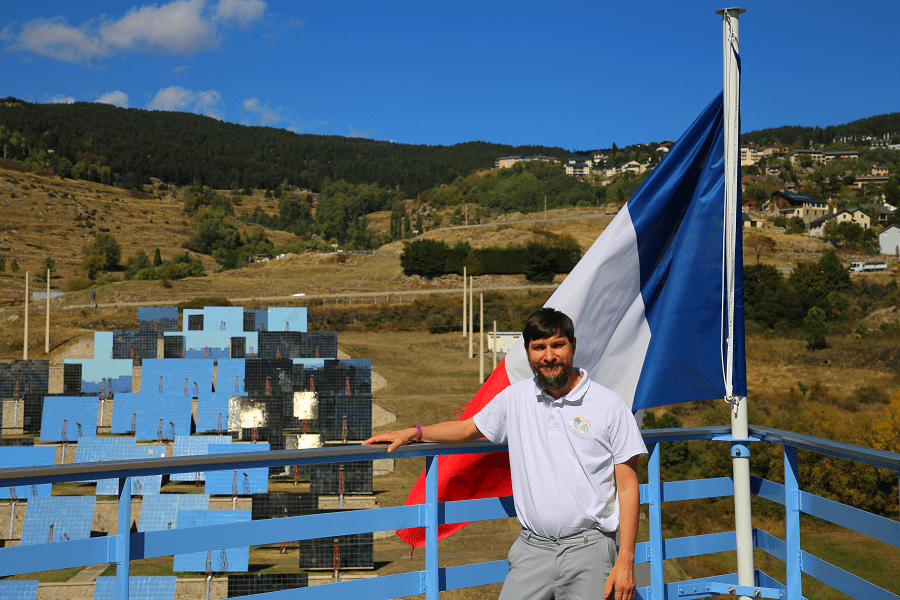Evelyn Segura is a biologist by heart and a science communicator by nature. Her love of science, in general, and biology, in particular, became her passion over the years.
In parallel with her studies at the Universitat de Barcelona (Spain), Evelyn began to get involved in communication activities. As a member of the marine biology coordinating group at the university, she began to give her first lectures on marine conservation.
In 2015, Evelyn began her television career as the host of the popular science show ¡Qué Animal! La 2 Spanish TV.
She also brought her passion for the wonders of nature to RNE’s “El gallo que no cesa” program and continues to do so every week on the Aruser@s magazine program on La Sexta.
Evelyn is the author of the book “Adaptarse o morir, los secretos de la naturaleza para sobrevivir en el mundo animal” (“Adapt or die, the secrets of nature to survive in the animal world”).
We spoke with Evelyn about climate change issues and their implications.
Interview: Irina Rybalchenko for El Periodic news
How would you explain climate change?
We are talking about global changes in the Earth’s climate due to changes in the composition of the atmosphere, which leads to an increase in average temperatures, a rise in sea levels, a thawing of the pole, or extreme meteorological events.
Climate changes also occurred in other periods of the Earth’s history. But what we are now experiencing is happening for the first time, since this is not due to natural causes, but to the activity of one of the species on the planet – humans. This is happening at a very high speed, with numerous negative consequences for nature and life. If we as humans are responsible for the planet, it is clear that we must decide how to avoid disaster while keeping climate justice in mind. Not all mankind has the same degree of responsibility. The most developed countries, the richest, are the main sources of greenhouse gas emissions. It is they who require more land-use modification to maintain their standard of living. Therefore, it is fair that these countries should take the greatest measures and change their attitude towards nature.
Another front where we can help mitigate climate change is by reducing animal protein intake. After all, this is not only a healthier lifestyle but also a way to respect the life of animals.
There was a period when the drought in Catalonia reached its highest level; the same happened in Andorra. What environmental, economic, and social impacts can result from a drought?
It is difficult to name all the consequences because there are many of them. Water scarcity is a game changer for habitats, and therefore, biodiversity must take action. If it were a gradual phenomenon, then there would be an adaptation of the species, but this is not the case.
Thus, ecosystems are threatened, and animals and plants suffer. Growth and reproduction cycles are changing; forced migrations are taking place, and spaces are becoming more vulnerable to fires and erosion…
The loss of wild biodiversity also has indirect consequences for the economy and our health. Natural spaces are vital. But drought also affects cultivated natural areas. Water scarcity reduces agricultural production, makes food more expensive, and can jeopardize our food security.
In Andorra, every year, there is less and less snow… How does this affect the Catalan territories?
Snow provides fresh water for the rest of the year and for the entire area down the mountains. If we don’t have this reservoir… areas that depend on melting will suffer from drought. But the climate of the highlands also suffers because snow is part of their cycle. The fact that there is no snow means that conditions are changing. But the biodiversity of the highlands cannot disappear forever. Species will move to higher levels until the mountains themselves run out… High-mountain ecosystems are like islands.
Is snow tourism becoming dangerous in the Pyrenees?
Certainly! And we can’t support it with artificial snow because the high temperatures make it unstable.
We hear talk of a “plastic continent” in the waters of the Pacific Ocean. This big mass of plastic is poisoning all living things… Does it affect us in any way here in the Pyrenees?
It is a reflection of our society, our consumption, and the mismanagement of the waste we produce. This should concern us primarily because it is a small part of the real impact we are having on rivers and oceans. I don’t know if we realize how badly we treat water bodies and what consequences this has for humanity.
Everything is connected! The balance is global, and if the factors are modified, a new balance must be created. The question is whether humans have a place in this new balance that we are causing with this climate change.
Which plastic is more environmentally friendly, and which is not?
Plastics are aggressive to the environment if we throw them into nature or if their production is associated with secondary environmental damage. There are countless different plastics, and innovations are being made to remove from circulation those that we have found to contain toxic substances to our health. Although it may seem strange, plastic is indispensable for achieving sustainable development goals.
Plastic is toxic but, at the same time, necessary. Many medicines cannot be transported without plastic. How do we deal with it?
Containers not only help improve the storage of medicines or food but also extend their lifespan and make their transportation more efficient. Plastic should not be demonized, but everything should start with good design, eco-design, and ensuring that plastic has an infinite lifespan so that it can be reused and recycled.
Which species are more affected by climate change, and how might their extinction affect our daily lives?
In many cases, climate change is another blow to species threatened by other factors such as pollution or overexploitation. If we have already weakened biodiversity, it is less likely to survive climate change.
There are several lists of species that are most threatened by climate change, where we find coral reefs or monkfish. But looking closer, we see, for example, the apollo butterfly (Parnassius apollo), many species of amphibians and reptiles, and all types of alpine climates, such as black grouse or snow partridge … The list is so long that it makes me sad just thinking about it.












